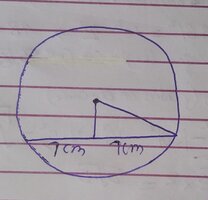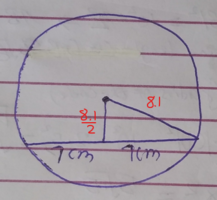A chord of length 14 cm is mid-way the radius of the circle. Calculate the radius of the circle.
If I must solve this problem, I think need help in interpreting the phrase is mid-way the radius of the circle.
Below is the drawing I managed to deduce from the words of the problem

But I can tell you that I have not been able to do anything meaningful with drawing. I think I need help here.
If I must solve this problem, I think need help in interpreting the phrase is mid-way the radius of the circle.
Below is the drawing I managed to deduce from the words of the problem

But I can tell you that I have not been able to do anything meaningful with drawing. I think I need help here.

